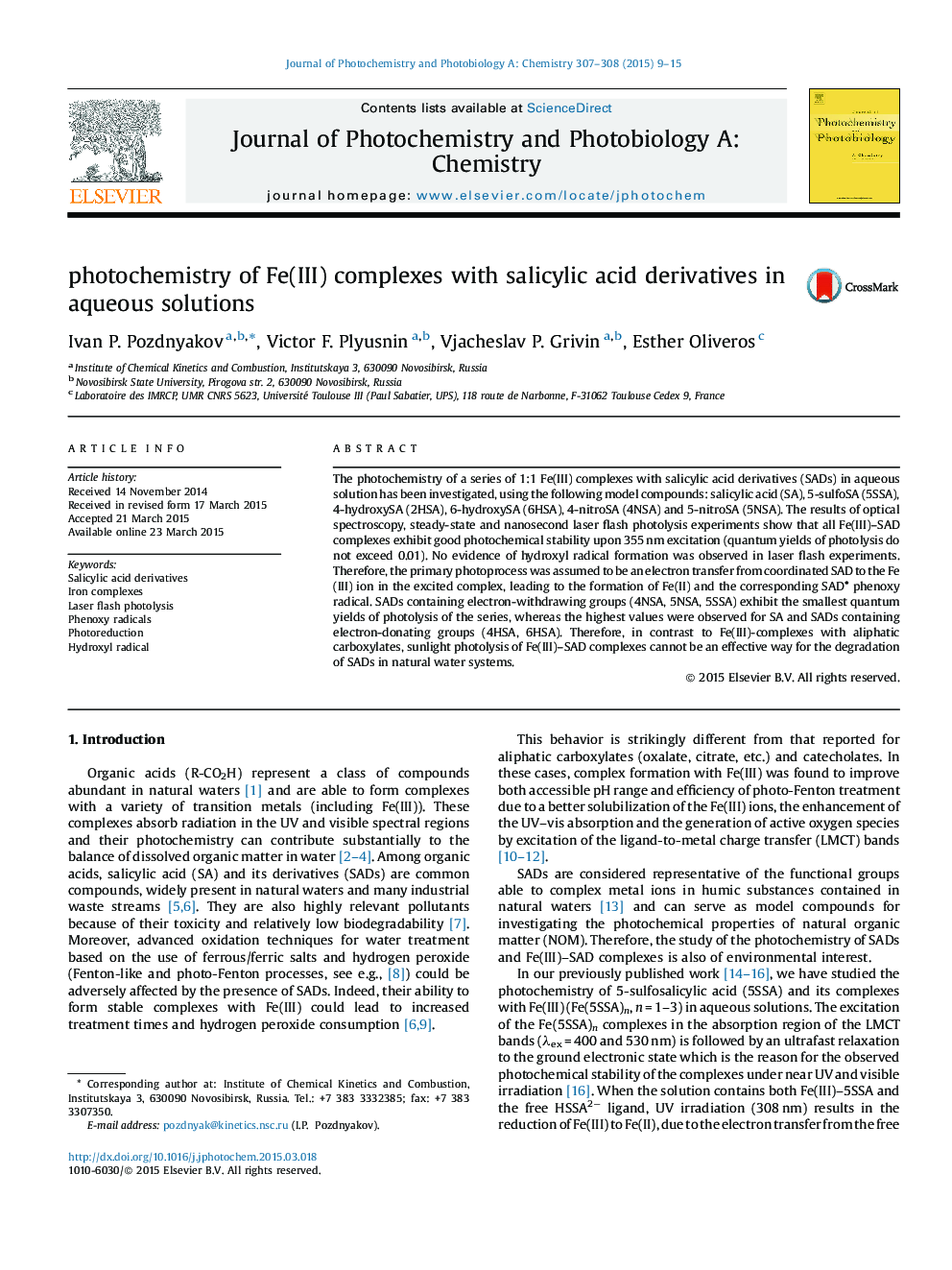| Article ID | Journal | Published Year | Pages | File Type |
|---|---|---|---|---|
| 26031 | Journal of Photochemistry and Photobiology A: Chemistry | 2015 | 7 Pages |
•Photolysis of 1:1 Fe(III) complexes with salicylic acid derivatives (SADs) were studied.•No hydroxyl radical formation was observed upon 355 nm excitation.•Fe(II) and SAD phenoxy radical are formed in the primary photochemical process.•Complexes with SADs containing SO3−, NO2 groups exhibit the smallest ϕphot ((1–4) × 10−3).•The highest ϕphot ((4–11) × 10−3) was observed for complexes with SADs containing OH group.
The photochemistry of a series of 1:1 Fe(III) complexes with salicylic acid derivatives (SADs) in aqueous solution has been investigated, using the following model compounds: salicylic acid (SA), 5-sulfoSA (5SSA), 4-hydroxySA (2HSA), 6-hydroxySA (6HSA), 4-nitroSA (4NSA) and 5-nitroSA (5NSA). The results of optical spectroscopy, steady-state and nanosecond laser flash photolysis experiments show that all Fe(III)–SAD complexes exhibit good photochemical stability upon 355 nm excitation (quantum yields of photolysis do not exceed 0.01). No evidence of hydroxyl radical formation was observed in laser flash experiments. Therefore, the primary photoprocess was assumed to be an electron transfer from coordinated SAD to the Fe(III) ion in the excited complex, leading to the formation of Fe(II) and the corresponding SAD phenoxy radical. SADs containing electron-withdrawing groups (4NSA, 5NSA, 5SSA) exhibit the smallest quantum yields of photolysis of the series, whereas the highest values were observed for SA and SADs containing electron-donating groups (4HSA, 6HSA). Therefore, in contrast to Fe(III)-complexes with aliphatic carboxylates, sunlight photolysis of Fe(III)–SAD complexes cannot be an effective way for the degradation of SADs in natural water systems.
Graphical abstractFigure optionsDownload full-size imageDownload as PowerPoint slide
